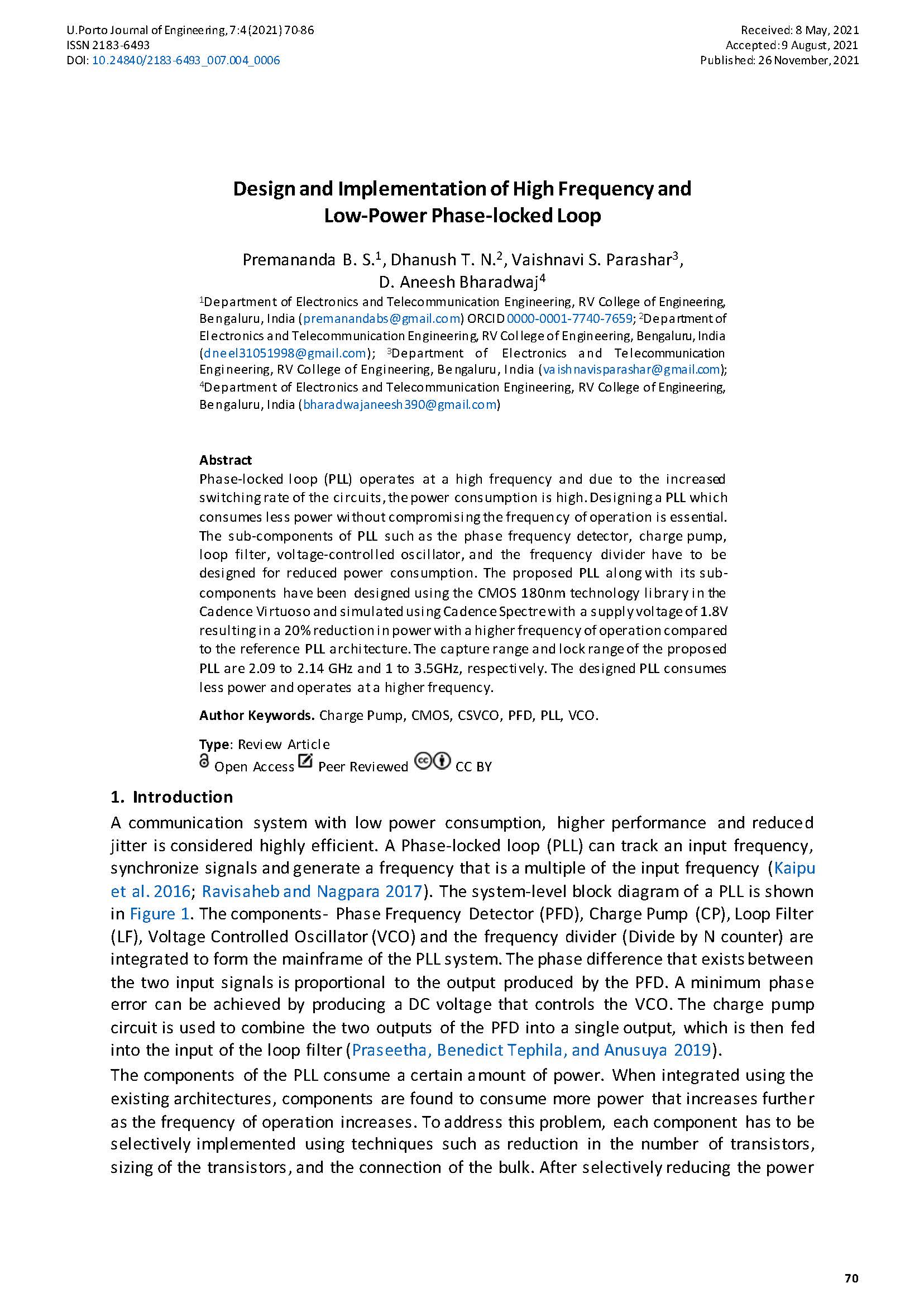Design and Implementation of High Frequency and Low-Power Phase-locked Loop
Main Article Content
Abstract
Phase-locked loop (PLL) operates at a high frequency and due to the increased switching rate of the circuits, the power consumption is high. Designing a PLL which consumes less power without compromising the frequency of operation is essential. The sub-components of PLL such as the phase frequency detector, charge pump, loop filter, voltage-controlled oscillator, and the frequency divider have to be designed for reduced power consumption. The proposed PLL along with its sub-components have been designed using the CMOS 180nm technology library in the Cadence Virtuoso and simulated using Cadence Spectre with a supply voltage of 1.8V resulting in a 20% reduction in power with a higher frequency of operation compared to the reference PLL architecture. The capture range and lock range of the proposed PLL are 2.09 to 2.14 GHz and 1 to 3.5GHz, respectively. The designed PLL consumes less power and operates at a higher frequency.
Downloads
Article Details

This work is licensed under a Creative Commons Attribution 4.0 International License.
Authors who publish with this journal agree to the following terms:
- Authors retain copyright and grant the journal right of first publication with the work simultaneously licensed under a Creative Commons Attribution License that allows others to share the work with an acknowledgement of the work's authorship and initial publication in this journal.
- Authors grant the journal the rights to provide the article in all forms and media so the article can be used on the latest technology even after publication and ensure its long-term preservation.
- Authors are able to enter into separate, additional contractual arrangements for the non-exclusive distribution of the journal's published version of the work (e.g., post it to an institutional repository or publish it in a book), with an acknowledgement of its initial publication in this journal.
- Authors are permitted and encouraged to post their work online (e.g., in institutional repositories or on their website) prior to and during the submission process, as it can lead to productive exchanges, as well as earlier and greater citation of published work (See The Effect of Open Access).

